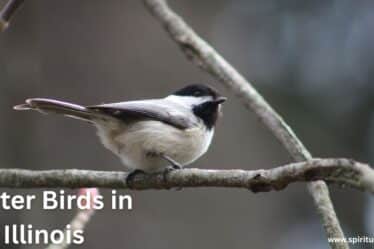
When you spot a flash of color in your backyard, you might wonder if you’re looking at a robin or a cardinal. Both birds are beautiful, beloved, and common across North America, but they have some big differences. In this guide, we’ll dive deep into the size and shape, coloration, songs and sounds, behavior, habitat, diet, and nesting habits of these two iconic birds. Whether you’re a backyard birder or just curious, you’ll soon know exactly how to tell a robin vs cardinal apart!
Comparison Between Robin And Cardinal
At first glance, the American Robin and the Northern Cardinal might seem similar because of their bright colors and lively presence. However, when you look closely, you’ll see clear contrasts in their structural characteristics, color patterns, and even their behavioral traits. These birds are often seen hopping around lawns, sitting in shrubs, or singing from trees, especially after a rain. Both have adapted perfectly to urban areas and rural areas, making them some of the easiest birds to spot across the habitat range of the United States.
Understanding the morphology and visual identification details can make birdwatching so much more rewarding. From the robin’s grayish-brown back and bright orange chest to the cardinal’s vibrant red body and black mask, every small feature tells a story about their ecological niches and survival strategies.
Size and Shape
When it comes to size difference and physical dimensions, robins and cardinals show clear variation. The American Robin typically measures between 9 inches to 11 inches in body length with a wingspan around 12.2 inches to 15.8 inches. Their round body, long legs, and fan-shaped tail give them a very sturdy look. In comparison, the Northern Cardinal is slightly smaller, measuring about 8.3 inches to 9.1 inches in length, with a wingspan ranging from 9.8 inches to 12.2 inches. Cardinals have a more sleek appearance with a thick bill, prominent crest, and rounded tail.
Their bird size and bird shape play a huge role in how they behave and move. Robins are built for running and hopping along the ground in search of earthworms, while cardinals prefer to perch in trees and dense shrubs, using their strong beaks to crack open seeds and fruits. These anatomical features and structural characteristics are not just for looks—they reveal each bird’s unique survival tactics.
Color Patterns

One of the easiest ways to tell a robin vs cardinal apart is by their plumage. Robins wear a grayish-brown back with a bright orange chest, a dark head, and a white patch under their lower belly and tail. This makes them look like they are always dressed for spring. Cardinals, on the other hand, are known for their vibrant red feathers, especially in males, which are paired with a striking black mask around their faces. Females are a bit more muted, sporting pale brown with reddish tinges on the wings, crest, and tail, along with a red-orange bill.
These color patterns reflect sexual dimorphism, which means males and females have different feather colors. This difference helps in visual identification in the field. Understanding their coloration and distinguishing features not only helps you recognize the species but also gives insights into their behavior during mating seasons and territorial displays.
Tail Differences
The tail tells a lot about a bird’s identity. Robins have a fan-shaped tail that spreads out wide when they land or take off. Their tails often help them keep balance as they hop energetically across lawns, especially after rain. Meanwhile, cardinals carry a rounded tail that complements their sleek shape. Their tails tend to look longer relative to their body when perched, adding to their graceful appearance as they navigate shrubs and trees.
Noticing these subtle anatomical features during birdwatching can make your identification skills sharper. Whether a bird darts low across the ground or flies up gracefully to a bird feeder, the tail movement and shape can be the giveaway clue you need.
Habitat Preferences of Robins and Cardinals
The habitat preference for each bird paints a clear map of where you can find them. Robins are highly migratory and travel south during colder months, often seen in flocks in open fields, parks, and lawns. In warmer seasons, they prefer open areas with soft soil to hunt for earthworms and insects.
Cardinals, however, are non-migratory and remain year-round in their home ranges. You’ll find them in shrubs, woodlots, gardens, and backyards across North America, thriving even in winter’s chill. Their preference for dense cover like shrubby forests makes them regulars at bird feeders, bringing a pop of color against snowy landscapes.
Robins
Robins enjoy open spaces where their foraging behavior thrives. After rain, they are often seen hopping energetically across lawns, searching for earthworms just beneath the surface. Their flexibility in choosing nesting sites like styled structures, trees, and even eaves makes them true survivors of both urban and rural areas.
Cardinals

Cardinals prefer more secluded environments. They choose dense shrubs, vines, and thick vegetation for nesting and protection. You can often hear their crisp songs in early mornings from deep within shrubs and trees. Their environmental adaptation allows them to flourish in a wide variety of settings across the USA.
Diet and Feeding Habits of Robins and Cardinals
Food plays a big part in the life of any bird, and robins and cardinals show interesting differences in their diet composition. Robins primarily feast on earthworms and insects during spring and summer. As the weather cools, they switch to fruits and berries they find in fields and gardens.
Cardinals have a slightly different approach. Their feeding habits lean heavily towards seeds and berries all year long, but they also feed on young cardinals with a diet supplemented by insects for protein. This shift in dietary preferences according to the season reveals their clever foraging behavior and nutrition needs.
Robins
Robins use their sharp eyesight to spot tiny prey items moving on the ground. During cooler seasons, their dietary preferences move toward berries, helping them survive when insects are scarce. Their ability to adjust their food sources shows their excellent feeding ecology.
Cardinals
Thanks to their thick bills, cardinals are expert seed-crackers. Their diet consists mainly of seeds, fruits, and occasional insects. Their strong beak shape makes it easy to crack even the toughest shells, ensuring a diverse seasonal diet throughout the year.
Breeding and Nesting Behaviors of Robins and Cardinals
Both robins and cardinals have fascinating nesting strategies and reproductive habits. Robins often build open-cup nests using mud, grass, and twigs. They love trees, bushes, and even unconventional spots like lamp posts and eaves for their nesting sites.
Cardinals prefer secrecy, tucking their nests inside dense shrubs or vines, hidden from predators. Their nest construction is tight and neat, designed to hold several eggs safely. The breeding season often sees cardinals fiercely guarding their nesting ecology, ensuring a higher success rate for their offspring.
Cardinals
Cardinals use thick vegetation for their nests, lining them with grasses and hair. During the breeding season, males often sing near the nest site as a form of parental care and territory defense.
Robins
Robins are known for having two or three broods per season. They meticulously pick safe spots, using mud as glue to hold the nest together. This clever nesting behavior and adaptable parental care make robins successful across a wide range of habitats.
Territorial and Social Behaviors of Robins and Cardinals

Territory matters a lot to both robins and cardinals. Robins are known for their fierce territoriality during nesting season. They will aggressively chase away intruders to protect their nest and feeding patterns. Outside of breeding times, robins become more social, often forming large flocks in fall and winter.
Cardinals, on the other hand, are strongly territorial all year round. Male cardinals use loud songs and territorial calls to defend their area, warning others to stay back. These intense behavioral traits show how both species balance aggression and social behavior depending on the season.
Robins
Robins switch between being fiercely solitary during breeding and wonderfully social when nesting season ends. Their seasonal behavior reflects their flexible survival strategy.
Cardinals
Cardinals stay territorial all year, using their songs and bright colors to maintain dominance over prime feeding and nesting spots. Their activity patterns revolve around maintaining their turf and finding mates.
Conclusion
When it comes to robin vs cardinal, the differences are easy to spot once you know what to look for. From the robin’s bright orange chest to the cardinal’s bold red feathers, each bird stands out in its own way. Understanding the details about robin vs cardinal helps you enjoy birdwatching even more. You can notice their songs, colors, size, and behaviors without any confusion.
If you ever wonder about robin vs cardinal again, just remember their unique traits. Whether you’re spotting them in your backyard or on a walk, knowing the facts about robin vs cardinal will make every bird sighting more fun and exciting. Keep looking up!



